Low-level shots can dramatically elevate your cinematic footage by offering unique perspectives and visual impact. They create an immersive viewer experience, enhancing depth and dimension in your scenes. You'll capture striking foreground elements and reveal often-overlooked details, adding texture and intrigue to your compositions. These shots alter spatial perception, emphasizing power dynamics and character vulnerability. They're perfect for seamless scene shifts and incorporating atmospheric effects. By using low-level angles, you'll heighten the emotional impact of your storytelling, drawing your audience deeper into the narrative. There's so much more to explore about the transformative power of this technique.
Unique Perspective and Visual Impact

Nearly every low-level shot in cinematic footage offers a unique perspective that can't be achieved with standard eye-level framing. When you position your camera close to the ground, you're inviting viewers to see the world from an unfamiliar vantage point. This change in perspective immediately grabs attention and creates visual interest.
Low-level shots can make subjects appear larger and more imposing, adding a sense of power or dominance to characters or objects. They also reveal details often overlooked at eye level, such as textures on the ground or the undersides of structures.
You'll find that these shots create a strong sense of depth, as foreground elements become more prominent and backgrounds stretch out above them.
The visual impact of low-level shots is undeniable. They can evoke feelings of vulnerability, isolation, or intrigue in your audience. By placing viewers in an unconventional position, you're challenging their perception and encouraging them to engage more deeply with your footage.
Whether you're shooting landscapes, action sequences, or intimate character moments, low-level shots will add dynamism and intrigue to your cinematic storytelling.
Enhanced Depth and Dimension
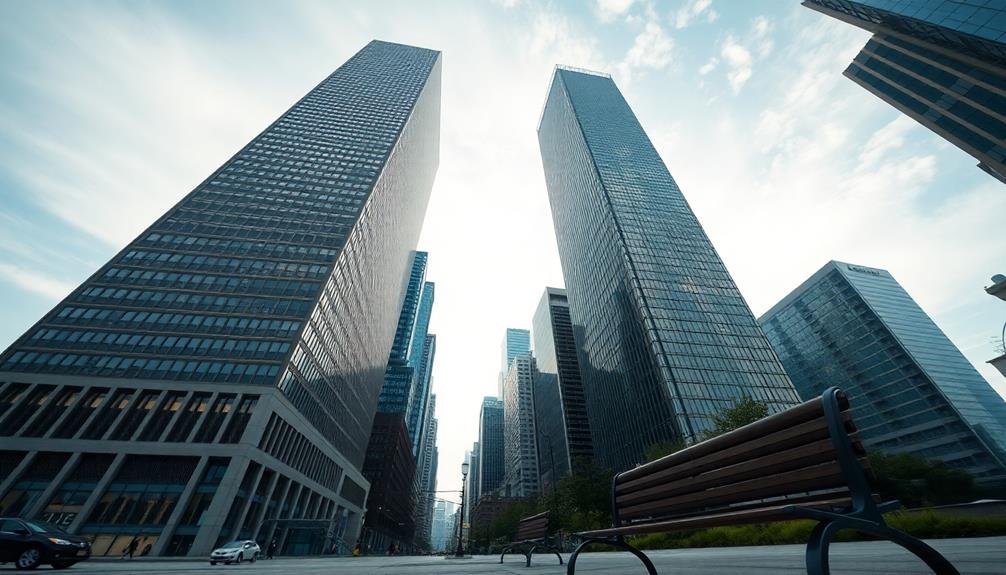
When you employ low-level shots in your cinematic work, you'll immediately notice how they amplify the relationship between foreground and background elements.
These shots create a striking contrast between objects close to the camera and those further away, enhancing the overall sense of depth in your scene.
You'll also find that low-angle perspectives can exaggerate the scale of subjects, making them appear larger and more imposing, which adds a new dimension to your visual storytelling.
Foreground-Background Relationship Amplification
Low-level shots excel at amplifying the relationship between foreground and background elements, creating a heightened sense of depth and dimension in cinematic footage.
When you position your camera close to the ground, you'll notice how objects in the foreground appear larger and more prominent, while background elements seem to stretch into the distance. This exaggerated perspective draws the viewer's eye through the frame, emphasizing the spatial relationships between various elements in your shot.
To maximize the impact of foreground-background relationships in low-level shots, consider these techniques:
- Use leading lines to guide the viewer's gaze
- Place interesting objects or textures in the immediate foreground
- Frame distant elements between foreground objects
- Experiment with shallow depth of field to isolate subjects
Exaggerated Scale Perception
Most low-level shots dramatically enhance the perception of scale in cinematic footage, creating an exaggerated sense of depth and dimension. When you position your camera close to the ground, you're altering the viewer's perspective, making objects appear larger and more imposing. This technique is particularly effective in establishing shots or when you want to emphasize the grandeur of a location or subject.
By placing your camera low, you're forcing the audience to look up at the scene, which naturally exaggerates the height and scale of elements in the frame. This perspective can make buildings seem towering, characters more dominant, and landscapes more expansive. It's a powerful tool for creating visual impact and drawing the viewer into the world you're presenting.
| Object | Normal View | Low-Level View |
|---|---|---|
| Skyscraper | Tall | Monumental |
| Person | Average | Towering |
| Car | Standard | Imposing |
| Tree | Natural | Majestic |
| Landscape | Scenic | Vast |
Use this technique judiciously to create contrast in your shots and emphasize key moments. It's particularly effective when shifting from standard eye-level shots to low-angle views, as the sudden change in perspective can create a dramatic and memorable visual experience for your audience.
Immersive Viewer Experience

Low-level shots pull you into the scene, offering an intimate visual perspective that's hard to ignore.
You'll feel a heightened sensory connection to the characters and environment, as if you're right there with them.
This altered spatial perception transforms your viewing experience, making you an active participant rather than a passive observer.
Intimate Visual Perspective
Diving into the domain of intimate visual perspectives, low-level shots bring viewers closer to the action and characters on screen. You'll find that these shots create a sense of immediacy and connection, allowing you to experience the scene from a more personal vantage point.
By positioning the camera at or below eye level, you're inviting the audience to engage with the narrative on a deeper, more emotional level.
Low-level shots can effectively convey a character's vulnerability, power dynamics, or internal struggles. They're particularly powerful when you want to emphasize:
- A character's emotional state
- The importance of small details or objects
- The weight of a decision or moment
- The physical presence of a character in their environment
When you utilize low-level shots, you're not just showing the audience what's happening; you're immersing them in the scene.
This technique can make viewers feel as if they're right there alongside the characters, experiencing their triumphs and tribulations firsthand.
Heightened Sensory Connection
Building on the intimate visual perspective, low-level shots also create a heightened sensory connection for viewers. When you're watching a film with these shots, you'll feel more immersed in the scene, as if you're right there with the characters.
The camera's proximity to the ground allows you to experience textures, surfaces, and details you'd typically miss from eye level. You'll notice the crunch of gravel underfoot, the rustling of grass, or the subtle vibrations of a passing vehicle. These shots can make you more aware of the environment's tactile qualities, enhancing your sensory engagement with the film.
They can also amplify the emotional impact of a scene by placing you in a vulnerable or unconventional position. Low-level shots often reveal subtle visual cues that contribute to the overall atmosphere. You might catch glimpses of characters' expressions or body language that would be obscured from higher angles.
This perspective can heighten tension, create suspense, or evoke empathy by literally bringing you closer to the action. By engaging more of your senses, these shots make the viewing experience more vivid and memorable.
Altered Spatial Perception
Throughout the course of a film, low-level shots greatly alter your spatial perception, creating an immersive viewer experience. When you're watching from a low angle, you'll feel as if you've been transported into the scene itself. This shift in perspective changes how you perceive the environment and characters, making you more engaged with the story unfolding before you.
Low-level shots manipulate your sense of scale and proportion. Objects and characters appear larger and more imposing, while backgrounds seem to stretch endlessly. This altered perception heightens the emotional impact of scenes and intensifies the drama. You'll find yourself more deeply connected to the characters' experiences, as if you're right there alongside them.
These shots can enhance your spatial perception in several ways:
- Emphasizing depth and distance
- Exaggerating height and power dynamics
- Creating a sense of vulnerability or intimacy
- Revealing hidden details in the environment
Dramatic Foreground Elements

In addition to creating depth, low-level shots can incorporate dramatic foreground elements to enhance visual interest and storytelling. When you position your camera close to the ground, you're able to include objects in the foreground that might otherwise be overlooked. These elements can serve multiple purposes in your composition.
Foreground objects can frame your subject, drawing the viewer's eye to the main focus of your shot. They can also add context, providing visual cues about the setting or environment. You'll find that including dramatic foreground elements can create a sense of scale, making your subject appear larger or more imposing.
Don't be afraid to experiment with unconventional foreground elements. Blades of grass, pebbles, or even puddles can become striking visual features when shot from a low angle. You can also use these elements to obscure parts of your frame, creating intrigue or mystery.
Remember to reflect on how foreground elements interact with your subject. They can create leading lines, guiding the viewer's gaze, or they can contrast with the background, adding depth and dimension to your shot.
Creative Framing Opportunities
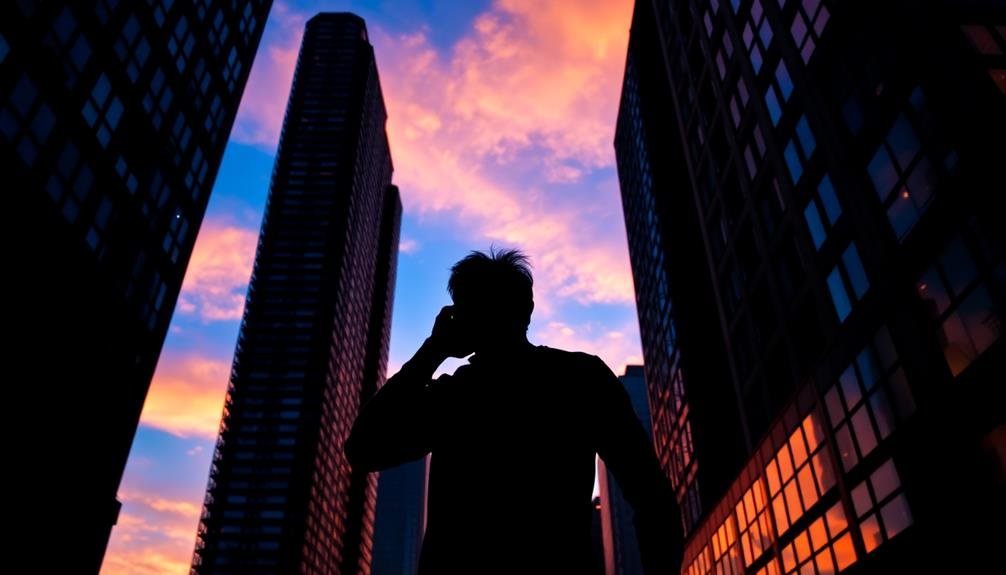
Low-level shots open up a world of creative framing opportunities you can exploit.
You'll capture unique perspectives on your subjects, creating dramatic height contrasts that emphasize power dynamics or vulnerability.
Unique Subject Perspectives
Low-level shots offer filmmakers a treasure trove of creative framing opportunities, providing unique perspectives on their subjects. By positioning the camera close to the ground, you'll capture angles that viewers rarely experience in everyday life, making your footage more engaging and memorable.
These shots can dramatically alter how your audience perceives characters and objects. When filming people, low-angle shots often make them appear larger, more powerful, or intimidating. Conversely, they can make inanimate objects seem more imposing or significant.
This technique is particularly effective in:
- Action sequences, where it heightens the sense of speed and intensity
- Horror films, creating an unsettling atmosphere
- Nature documentaries, offering a unique view of wildlife or landscapes
- Architectural photography, emphasizing the grandeur of structures
Dramatic Height Contrasts
Leveraging dramatic height contrasts, low-level shots provide filmmakers with a powerful tool for creative framing. By positioning the camera close to the ground, you can create striking visual juxtapositions between subjects and their surroundings. This technique emphasizes the scale and grandeur of tall structures, making skyscrapers appear even more imposing or trees seem to stretch endlessly into the sky.
You'll find that low-level shots can also magnify the perceived stature of characters. When filming from below, your subjects will appear larger than life, conveying a sense of power, authority, or intimidation. Conversely, you can use this technique to make other elements in the frame feel small or insignificant, enhancing the emotional impact of your scene.
Don't limit yourself to static shots; consider incorporating movement. A low-angle tracking shot can create a dynamic sense of motion, allowing viewers to experience the environment from a unique perspective.
Ground-Level Texture Emphasis
Ground-level shots offer a unique opportunity to highlight textures and details often overlooked in conventional cinematography. By positioning your camera close to the ground, you'll capture intricate surfaces and patterns that add depth and richness to your footage.
This perspective can transform ordinary scenes into visually striking compositions, drawing viewers' attention to the minutiae of the environment.
When employing ground-level texture emphasis, consider these key techniques:
- Use a wide-angle lens to exaggerate foreground elements
- Experiment with shallow depth of field to isolate specific textures
- Play with natural light and shadows to enhance surface details
- Incorporate movement to create dynamic texture reveals
Heightened Sense of Scale

One of the most striking effects of low-level shots is their ability to create a heightened sense of scale. By positioning the camera close to the ground, you're able to make subjects appear larger and more imposing than they'd from a standard eye-level perspective. This technique works particularly well for architecture, vehicles, and even human subjects.
When you capture a building from ground level, it'll tower over the frame, emphasizing its grandeur and might. Similarly, cars and other vehicles can look more powerful and intimidating when shot from below.
For human subjects, low-angle shots can make them appear taller, stronger, and more authoritative. This heightened sense of scale isn't just about making things look bigger. It's about creating a visual hierarchy that guides the viewer's eye and establishes the importance of elements within your frame.
You can use this technique to underscore the significance of a character or object in your story, or to convey a sense of awe and wonder. It's a powerful tool for manipulating perspective and influencing how your audience perceives the world you're presenting on screen.
Dynamic Movement and Flow
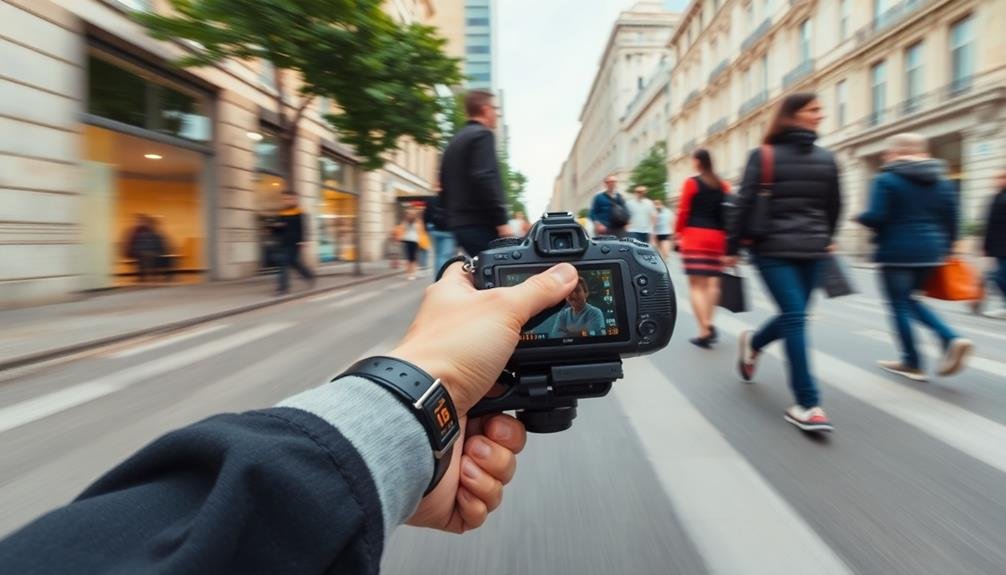
Low-level shots excel at creating dynamic movement and flow within cinematic footage. When you position your camera close to the ground, you'll capture a unique perspective that enhances the sense of motion and energy in your scenes. This technique is particularly effective for action sequences, chase scenes, or any moment where you want to convey a feeling of speed and urgency.
By keeping your camera low, you'll create a more dramatic interplay between foreground and background elements. Objects passing close to the lens will appear larger and move faster, while the background will seem to stretch out, emphasizing the distance covered. This visual contrast adds depth and excitement to your shots.
To maximize the impact of low-level shots for dynamic movement:
- Use wide-angle lenses to exaggerate perspective
- Incorporate smooth camera movements like tracking or dolly shots
- Experiment with different speeds of motion
- Utilize foreground elements to frame and guide the viewer's eye
Revealing Hidden Details
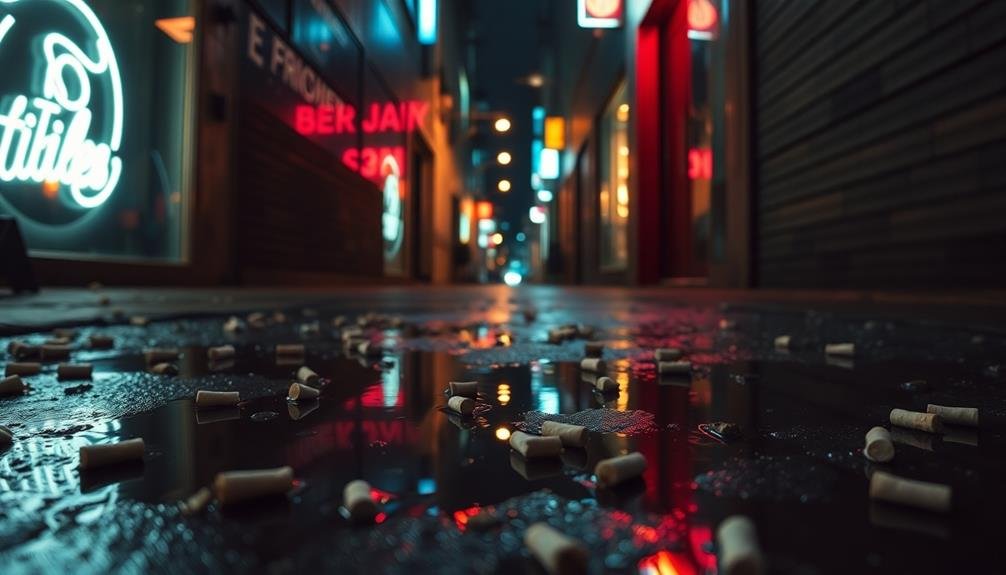
A wealth of often-overlooked details can be revealed through low-level shots in cinematic footage. By positioning your camera close to the ground, you'll capture elements that might otherwise go unnoticed. Textures, patterns, and small objects suddenly become prominent, adding depth and interest to your scenes.
You'll find that low-level shots emphasize the foreground, bringing attention to surfaces like grass, sand, or pavement. This perspective can reveal intricate details in flooring, carpets, or even the wear and tear on characters' shoes. It's an excellent way to establish setting or provide subtle visual cues about a character's journey.
In outdoor scenes, you'll discover a whole new world of miniature landscapes. Blades of grass become towering forests, and small pebbles transform into imposing boulders. This shift in scale can create a sense of wonder or unease, depending on your intended mood.
Low-level shots also allow you to capture unique reflections in puddles, polished surfaces, or mirrored objects. These reflections can offer a fresh perspective on your subjects or reveal hidden aspects of the environment, adding layers of visual interest to your cinematic footage.
Emphasizing Texture and Patterns
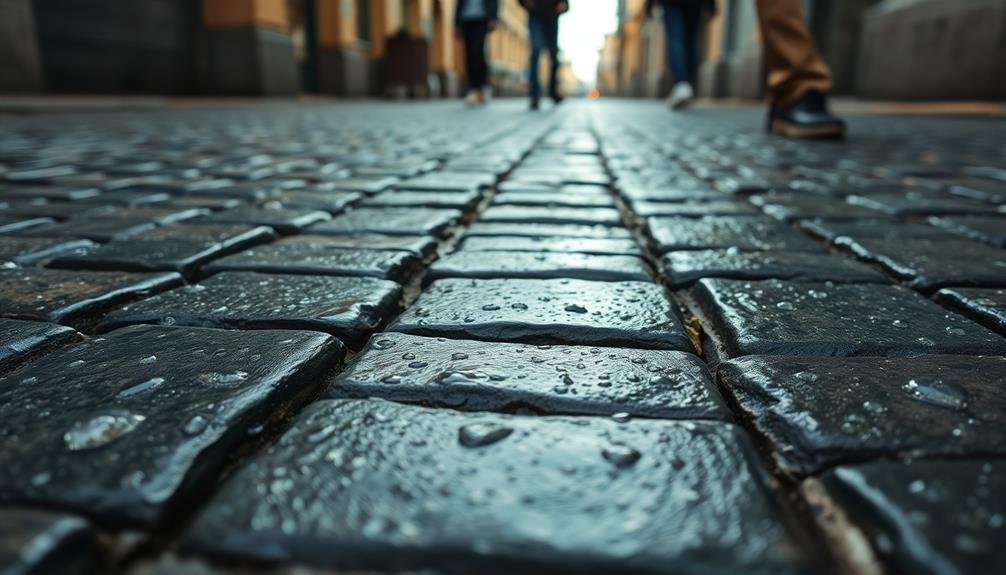
Building on the ability to reveal hidden details, low-level shots excel at emphasizing texture and patterns in cinematic footage. When you position your camera close to the ground, you'll capture surfaces and objects from a unique perspective that highlights their intricate features.
This technique is particularly effective for showcasing:
- Natural textures like grass, sand, or rock formations
- Man-made patterns in architecture or urban environments
- Fabric textures in costumes or set designs
- Minute details in props or small objects
By placing your lens near these surfaces, you'll create a visual feast that engages your audience's senses. The proximity exaggerates textures, making them appear more tactile and immersive. You'll find that even mundane objects can become enchanting subjects when viewed from this angle.
To maximize the impact of texture and patterns in your low-level shots, consider using a wide aperture to create a shallow depth of field. This technique will isolate specific textures while blurring others, guiding the viewer's eye to the most important elements.
Experiment with different lighting conditions to further enhance the visibility of textures and patterns, as oblique light can cast shadows that accentuate surface details.
Seamless Transitions Between Scenes

Through the creative use of low-level shots, you can craft seamless changes between scenes that maintain visual continuity and flow. By positioning your camera close to the ground, you'll create a unique perspective that links different locations or time periods.
Start with a low-angle shot of a character's feet walking, then shift to a similar shot in a new setting. This technique establishes a visual connection, making the scene change feel natural and unobtrusive.
You can also use low-level shots to guide the viewer's eye across scenes. Focus on small details at ground level, like leaves blowing across a path or water rippling in a puddle. As these elements move out of frame, cut to a new scene that begins with similar low-level imagery. This method creates a smooth visual handoff between locations.
Don't forget to reflect on the emotional impact of your changes. Low-angle shots can convey tension, vulnerability, or a sense of scale.
Atmospheric and Environmental Effects
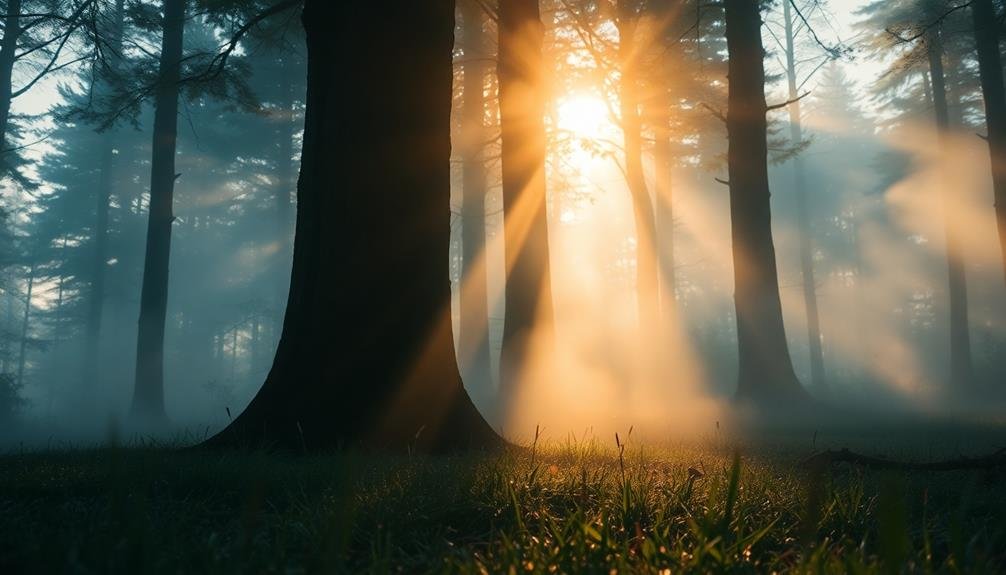
When capturing low-level shots, you'll find that atmospheric and environmental effects play an essential role in enhancing the mood and visual impact of your footage. These elements can transform an ordinary scene into a visually striking and emotionally resonant one.
By positioning your camera close to the ground, you'll naturally incorporate more of the surrounding environment, including atmospheric conditions like fog, mist, or dust.
To maximize the impact of atmospheric and environmental effects in your low-level shots:
- Time your shoots during "golden hour" or "blue hour" for dramatic lighting
- Use a wider aperture to capture bokeh from ground-level elements
- Experiment with practical effects like smoke or water spray
- Incorporate natural elements like grass, leaves, or puddles in the foreground
You'll notice that these effects can add depth, texture, and dimension to your shots.
They'll also help create a sense of immersion, drawing viewers into the scene. By carefully considering the atmospheric and environmental conditions when planning your low-level shots, you'll elevate your cinematic footage and create more compelling visual narratives.
Character and Subject Interactions
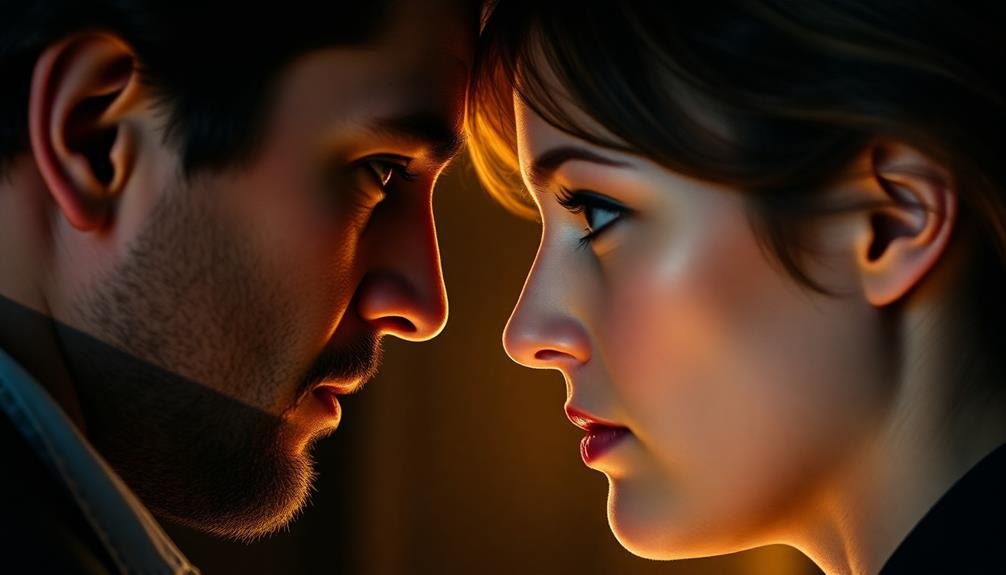
Low-level shots offer unique opportunities for capturing compelling character and subject interactions. When you position your camera at a lower angle, you'll create a sense of intimacy between the viewer and the characters on screen. This perspective allows you to emphasize facial expressions, body language, and subtle gestures that might be missed from a standard eye-level shot.
You'll find that low-level shots can enhance the power dynamics between characters. By shooting upwards, you can make one character appear more dominant or intimidating, while others may seem vulnerable or submissive. This technique is particularly effective in confrontational scenes or moments of tension.
When filming interactions with objects or environments, low-level shots can reveal intricate details and textures that add depth to your storytelling. You'll capture how characters interact with their surroundings in a more immersive way, whether it's hands grazing tall grass or feet stepping through puddles.
Don't forget to reflect on the emotional impact of low-level shots. They can create a sense of unease, excitement, or wonder, depending on the context. By carefully choosing when to employ this technique, you'll elevate the emotional resonance of your cinematic footage.
Cinematic Storytelling Techniques

Filmmakers have a rich palette of cinematic storytelling techniques at their disposal when using low-level shots. You can leverage these angles to create tension, emphasize power dynamics, or reveal essential details that might otherwise go unnoticed. By placing the camera close to the ground, you're inviting viewers to experience the scene from a unique perspective, often heightening the emotional impact of the narrative.
When employing low-level shots, consider these cinematic storytelling techniques:
- Contrast character statures to highlight relationships
- Reveal hidden objects or clues relevant to the plot
- Create a sense of vulnerability or danger for characters
- Emphasize the scale of environments or obstacles
You'll find that low-level shots can effectively convey a character's mental state or physical condition. For instance, a low angle on a character who's just been defeated can amplify their sense of despair.
Alternatively, you might use this technique to build suspense by slowly revealing information to the audience. Remember, the key is to use low-level shots purposefully, ensuring they contribute to your overall narrative and visual style rather than becoming a distracting gimmick.
Frequently Asked Questions
What Equipment Is Best for Capturing Low-Level Shots?
For low-level shots, you'll want a sturdy tripod with adjustable legs or a slider for smooth movement. Don't forget a camera with a flip-out screen. Gimbals and drones can also capture great low-angle footage.
How Do You Protect Your Camera When Shooting From Ground Level?
To protect your camera at ground level, you'll want to use a sturdy baseplate or slider. Don't forget a rain cover for wet conditions. Always check the surface for debris and use a lens filter for added protection.
Are There Any Legal Concerns When Filming Low-Level Shots in Public Spaces?
When filming low-level shots in public spaces, you'll need to be aware of privacy laws and property rights. Always obtain necessary permits, respect private property boundaries, and avoid capturing identifiable individuals without their consent.
How Do You Maintain Focus When Shooting From Extremely Low Angles?
To maintain focus when shooting from extremely low angles, you'll want to use a small aperture for greater depth of field. It's also helpful to use manual focus and pre-focus on your subject before getting into position.
What Are the Challenges of Lighting a Scene for Low-Level Shots?
You'll face challenges with shadows and glare when lighting low-level shots. You've got to carefully place lights to avoid casting unwanted shadows or creating reflections off surfaces. It's tricky, but essential for the shot's quality.
In Summary
You've now explored the power of low-level shots in elevating your cinematic footage. By embracing this technique, you'll add depth, drama, and a unique perspective to your work. Don't hesitate to experiment with different angles and compositions. Remember, low-level shots aren't just about looking up; they're about immersing your audience in the story. So get low, be creative, and watch your footage transform into something truly cinematic.

As educators and advocates for responsible drone use, we’re committed to sharing our knowledge and expertise with aspiring aerial photographers.




Leave a Reply